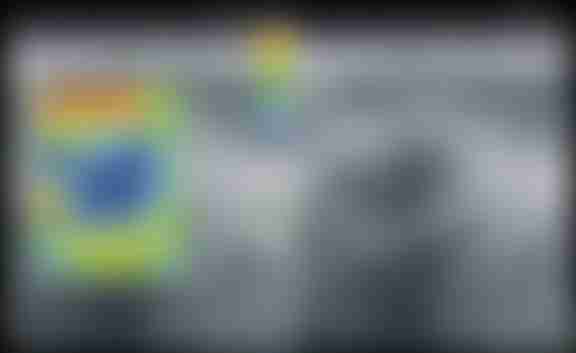New and Experimental Imaging Techniques to Detect Breast Cancer

Source: Shutterstock
Breast cancer screening and diagnostic tests are essential for early detection and treatment of the disease. However, it is not uncommon for patients to experience stress and anxiety due to the potential discomfort associated with these procedures.
Fortunately, ongoing research efforts are aimed at developing new imaging techniques and methods that can help reduce discomfort and improve the accuracy of results. These advancements can greatly benefit patients by minimizing the negative effects of misdiagnosis and improving their health outcomes. By staying informed about these developments, patients can make more informed decisions about their healthcare and take proactive steps towards better health.
Several experimental imaging techniques are being investigated to detect breast cancer.
Diffuse optical tomography
Diffuse optical tomography (DOT) is a non-invasive imaging technique that measures the functional characteristics of breast lesions using near-infrared light to probe tissue optical properties. The near-infrared light that is projected into breast tissue is scattered and absorbed by the various chromophores in tissue, such as haemoglobin, water, and lipids. Normal and abnormal tissues can be differentiated according to how light is absorbed or scattered by them (absorption or scattering coefficients).

A scan with the X-ray-based technique digital breast tomosynthesis (left) compared to an optical imaging scan (right) revealing hemoglobin concentrations associated with the formation and growth of tutors. The arrow in each image points to the 2-cm invasive carcinoma in the breast. Source: Athinoula A. Martin's Center for Biomedical Imaging
One of the major challenges of DOT currently is its high sensitivity to noise due to photon scattering, resulting in a low spatial resolution. Efforts to overcome this problem involve using hybrid imaging tests, combining DOT with existing imaging modalities such as digital breast tomosynthesis (DBT) and magnetic resonance imaging (MRI). Some studies have shown promising results with these hybrid systems. Together with its features, such as being non-ionizing and its relatively low cost, DOT can potentially be a diagnostic tool for breast cancer in the future.
Photoacoustics
Photoacoustics (PA) (also known as optoacoustics) is a hybrid imaging technology that uses both optical and acoustic principles to create images of the breast. It uses optical excitation to generate ultrasonic waves, which are then detected and used to construct an image. When breast tissue is irradiated by a pulsed laser light, it experiences thermoelastic expansion and creates an oscillating movement in the tissue, which leads to what is called a photoacoustic effect. The pressure waves generated from this are then detected using multiple ultrasound transducers. As the scattering and attenuation of ultrasound waves in tissue is 2 to 3 orders of magnitude less than that of optical modalities, the spatial resolution of this modality is much higher than purely optical imaging techniques, such as DOT.

Photoacoustic imaging. Laser irradiation of tissue leads to thermoelastic expansion of light-absorbing chromophores that can be detected as ultrasonic waves that can be detected by ultrasound transducers. Source: M. Soltani, et al. (2019)
PA imaging has the potential to detect malignant tumors early due to its ability to detect tumor angiogenesis from higher hemoglobin levels, which can be identified using PA. Some studies have shown that PA systems had a higher sensitivity and specificity than screening mammograms and were able to upgrade BI-RADS scores in malignant masses or downgrade BI-RADS scores in benign masses, potentially reducing the number of false-positive examinations and unnecessary biopsies of benign masses. With near-infrared (NIR) light, PA imaging is also free of ionizing radiation.
Currently, one major challenge of PA imaging is optical attenuation in tissue. Certain methods, such as using multiple light illumination angles and optimizing imaging geometry, have been found to improve light penetration. Along with other improvements in system designs and image reconstruction techniques, PA imaging has great potential for breast cancer screening and diagnosis in the clinical setting.
Contrast-enhanced spectral mammography
Contrast-enhanced spectral mammography (CESM) is a mammographic technique that uses a contrast agent to improve the visibility of breast tissue on mammograms. It utilizes an injection of an iodinated contrast agent followed by a dual-energy exposure during a single breast compression. Multiple projections are taken on each breast.
CESM has been shown in multiple studies to have a significantly higher sensitivity and specificity than conventional mammography. CESM also compares favorably with magnetic resonance imaging (MRI) for local breast cancer staging. Patients have also stated their preference for CESM over MRI due to the potential benefits of faster procedure times, greater comfort, lower cost, and lower noise levels.
However, even with its higher sensitivity and specificity than conventional mammography, false positives and negatives still occur in CESM. False positives tend to occur due to benign breast conditions such as papillomas and fat necrosis. As only a few projections are taken on each breast, false negatives tend to occur when lesions are not included in the mammographic field of view. Computer-aided diagnosis (CAD) systems are currently being developed for use with CESM, which may improve image interpretation.
Ultrasound elastography
Elastography is a non-invasive technique that uses stiffness or strain images to detect or classify anatomical areas with different elasticity patterns. It allows the differentiation of healthy and abnormal tissue, such as tumors, as breast cancer tumors tend to be firmer and stiffer than the surrounding breast tissue. In ultrasound elastography, the breast is compressed slightly, and the ultrasound can show the stiffness or firmness of a particular area. This technique may help distinguish between benign and malignant breast lesions according to their differing tissue stiffness.

Strain ultrasound elastography image of a breast lesion. The stiffness or strain in the lesion tissue is shown as either a color-coded (left) or black-and-white (right) image. Source: Applied Radiology
Electrical impedance tomography
Electrical impedance tomography (EIT) is a non-invasive procedure based on the differing electrical impedance of healthy and cancerous tissue to detect breast cancer. As cancer cells display altered local dielectric properties, they have significantly higher conductivity values. The variances between tissue conductivity and permittivity in the breast can be captured through a portable transducer and computer display, which generate images based on electrical measurements. Electrodes affixed to the skin deliver low levels of electrical current to a specific region of the body, and the resulting electrical potentials are recorded and presented on the computer screen.
This method does not emit any ionizing radiation, is relatively low cost and mobile, and does not require any compression of the breast, making it a potential primary screening method for breast cancer. However, the poor accuracy of tumor localization remains a challenge that must be overcome before it is viable in the clinical setting.These experimental imaging techniques have shown promising results in improving the detection and diagnosis of breast cancer.
These new imaging techniques are currently undergoing testing to confirm their effectiveness and usefulness in clinical settings. While there is still more research to be done, there is a sense of hope and optimism that these new methods will provide more precise, comfortable, and convenient ways to detect and diagnose breast cancer in the future. Until these new methods are fully established, the current standard methods will continue to be utilized to ensure the highest level of care for patients.